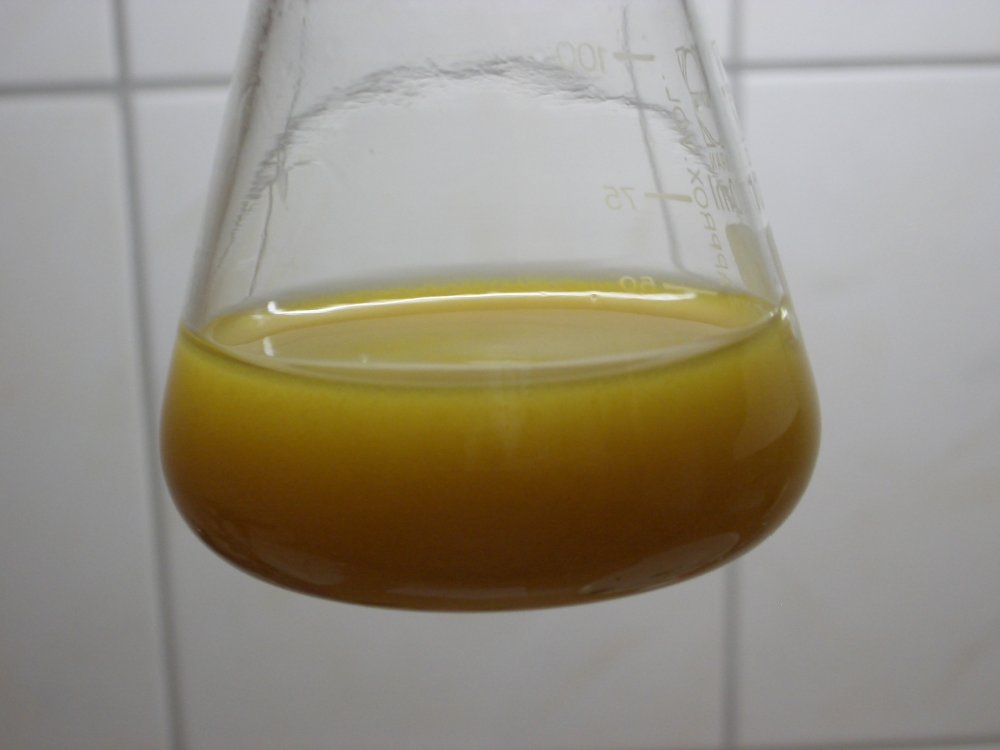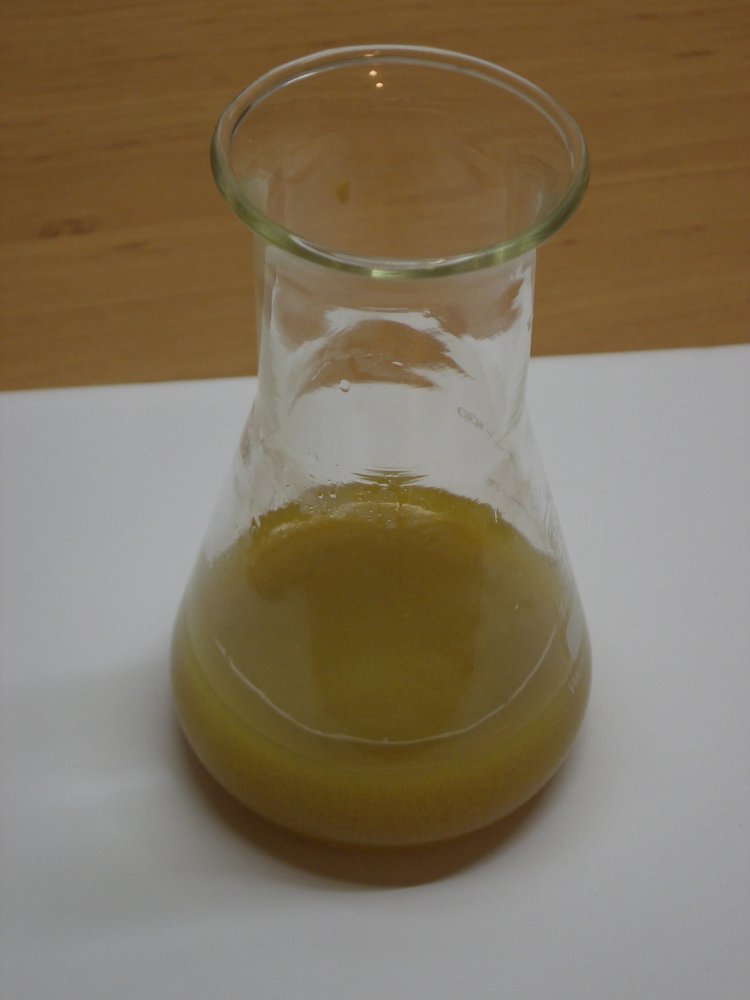
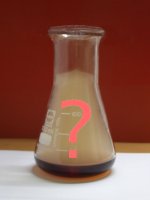

Dark copper(I) / copper(II) complex and NaOH
This series of images shows that copper (I) chloride, dissolved in conc. HCl (30%) is almost colorless and that on oxidation by air, it becomes dark brown.
The copper slowly dissolves and the liquid becomes very dark brown, as shown in the experiments, described in the URL's above. If excess copper is used, then at a certain point, the liquid becomes lighter again. In this experiment a test tube is shown, with the copper wire left in the liquid and the test tube stoppered, so that no oxygen could enter the system.
![]()
![]() Required chemicals:
Required chemicals:
-
copper chloride
- metallic copper
- concentrated hydrochloric acid, 30% HCl
- sodium hydroxide
![]()
Preparation of colorless solution of copper (I) chloride in concentrated hydrochloric acid:
Prepare a solution of copper (I) chloride in concentrated hydrochloric acid as follows:
- Dissolve some copper (II) chloride in concentrated hydrochloric acid. This yields a yellow/green liquid.
- Add a fairly large amount of copper wire to the liquid and stopper the test tube tightly.
- Leave test tube stoppered for at least a day and shake sometimes. The liquid at first becomes very dark, but at a certain point in time, the liquid becomes lighter again. When one is waiting long enough, the liquid finally becomes almost colorless.
The following picture shows the contents of the stoppered test tube after a few days of waiting.
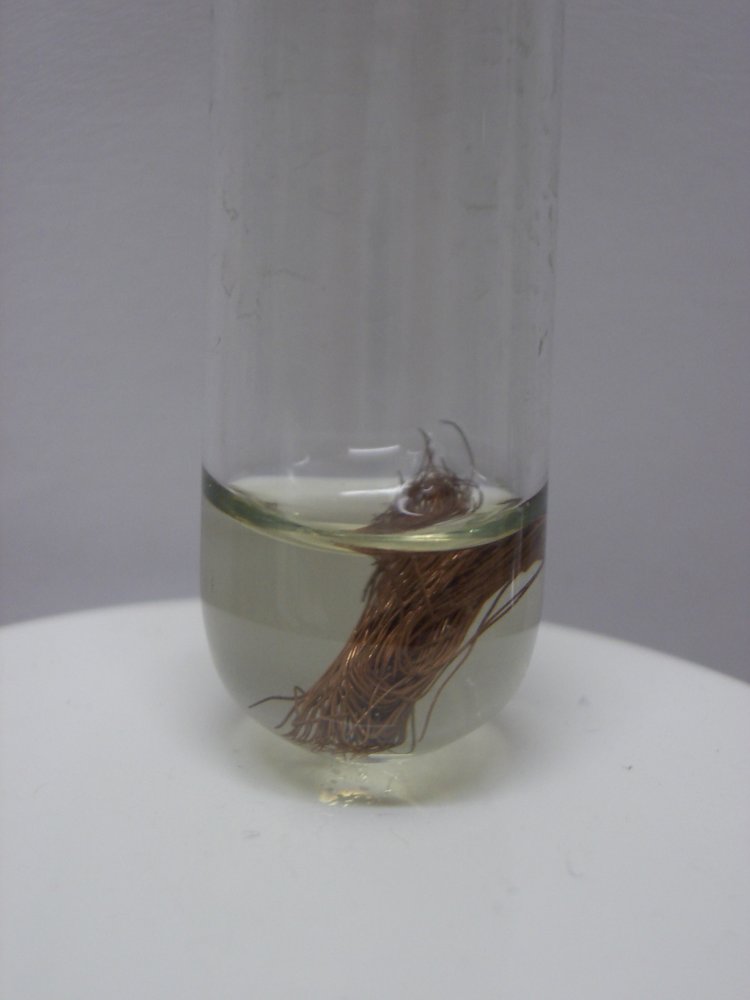
The liquid is almost colorless, one can see the copper wire in the test tube.
![]()
Oxidation of copper (I) by oxygen from air, formation of dark complex
Now, the test tube is opened and fresh air is allowed to come in. The following sequence shows the contents of the test tube, with a few tens of seconds between each image taken, and sometimes a little shaking. The most right picture is approximately 3 minutes after the left picture. So the liquid becomes darker quickly. The liquid, sticking to the glass, almost immediately gives a strong yellow/brown tinge to the glass. This sequence nicely shows that a dark complex is formed and not just a copper (II)/ chloride complex, which would be much lighter yellow/green.
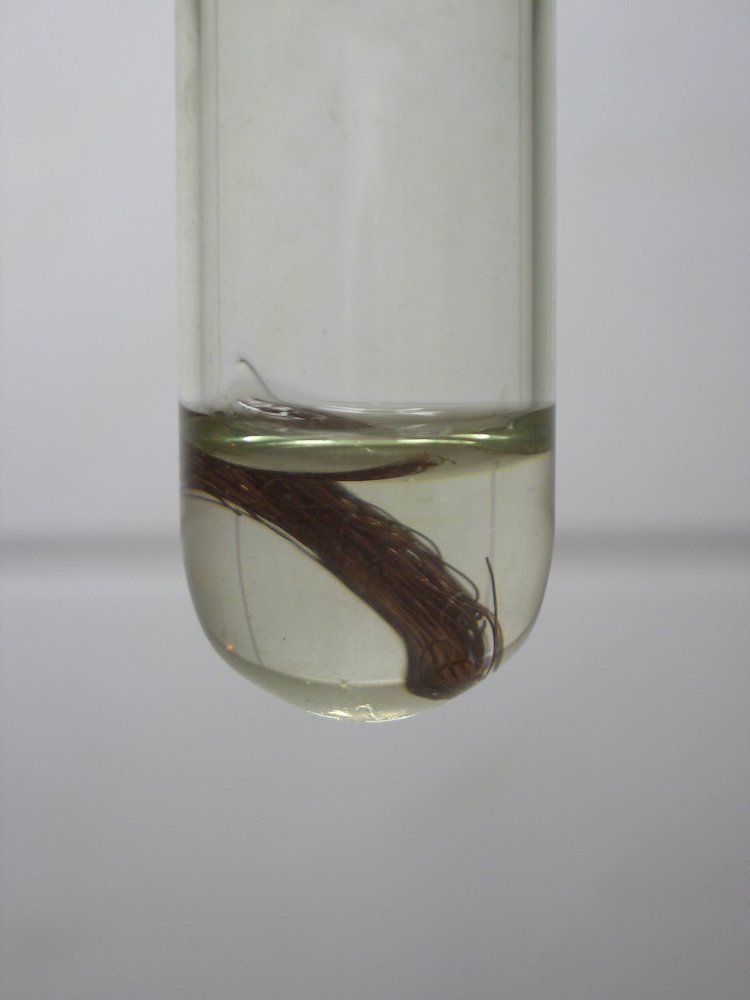
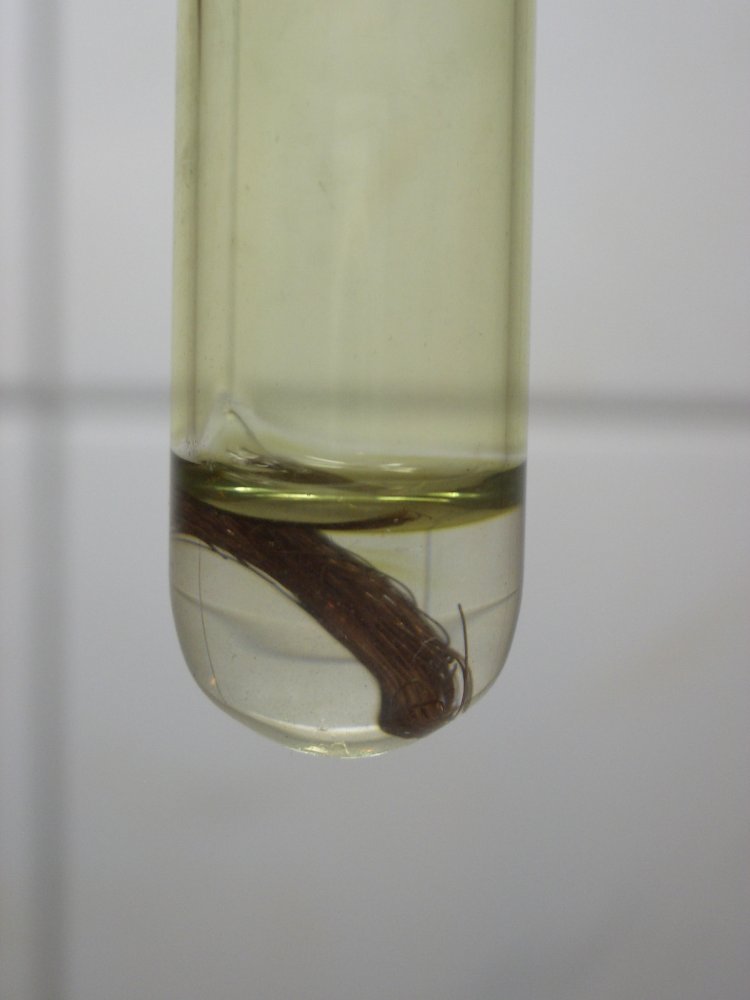
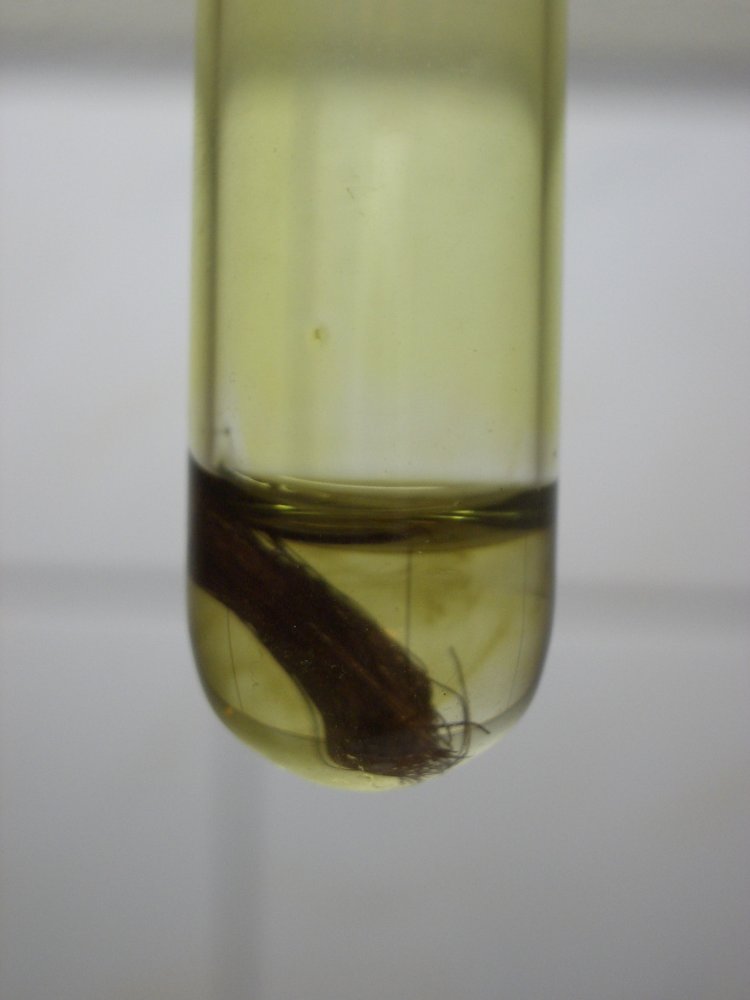
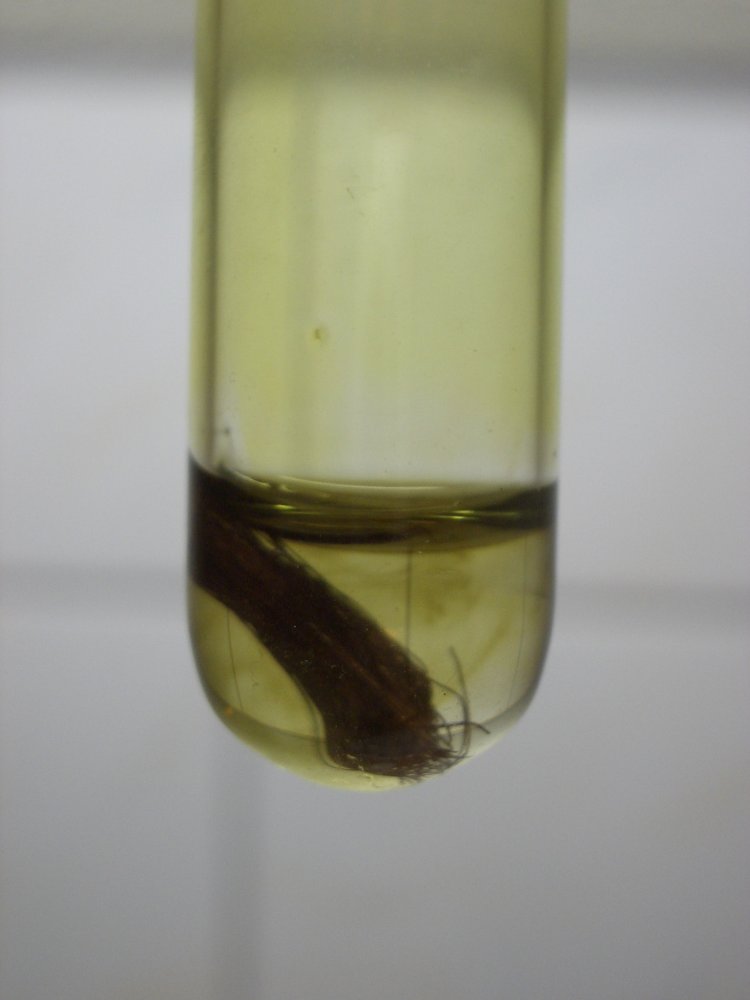
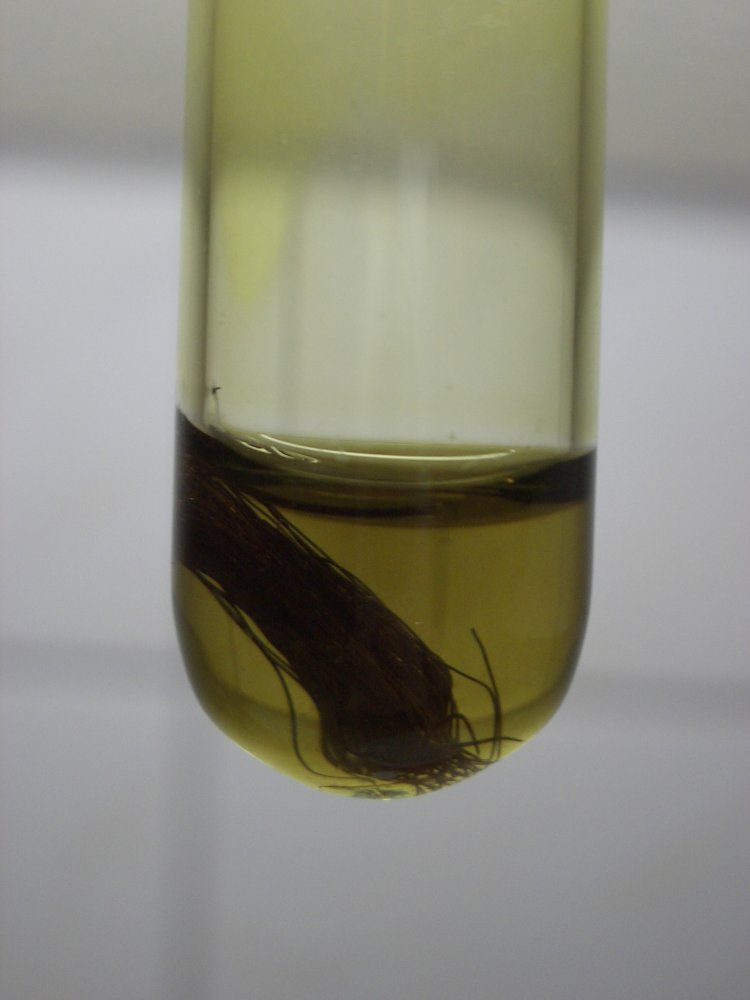
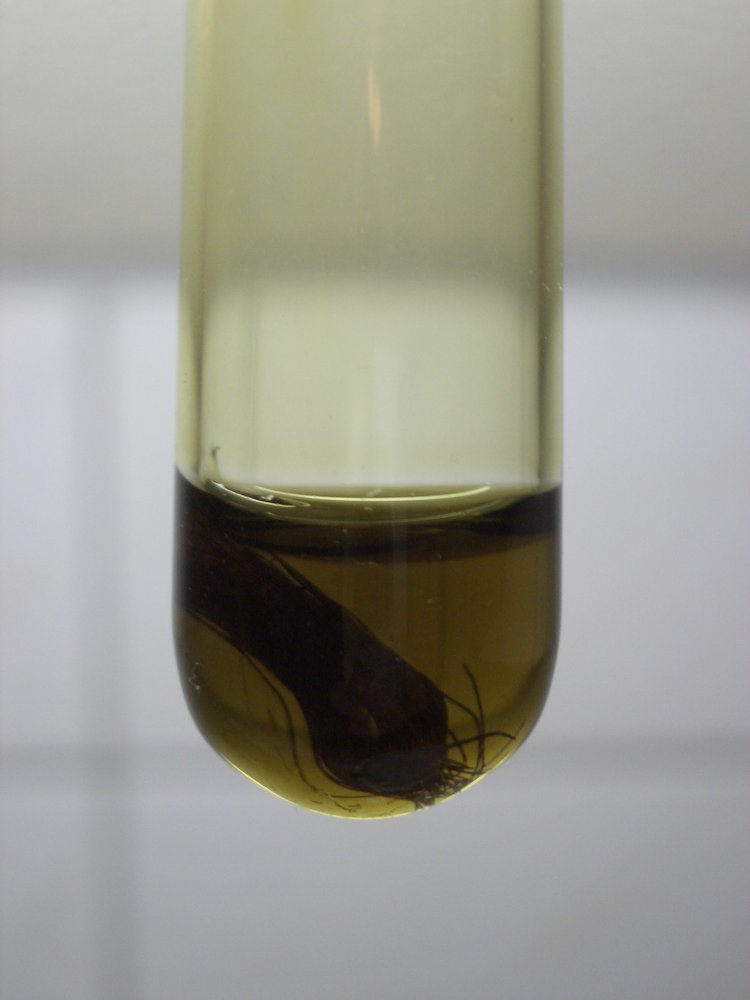
![]()
Precipitation of dark complex by sodium hydroxide:
Next step is to learn a little more about the dark brown compound formed. The copper wire was removed from the liquid and the liquid was allowed to stand much longer in contact with fresh air. It has become dark brown, almost black at that time. Probably it contains quite a lot of copper (II) at this moment, together with copper (I). A dilute solution of NaOH was prepared in the mean time, as shown in the next picture.
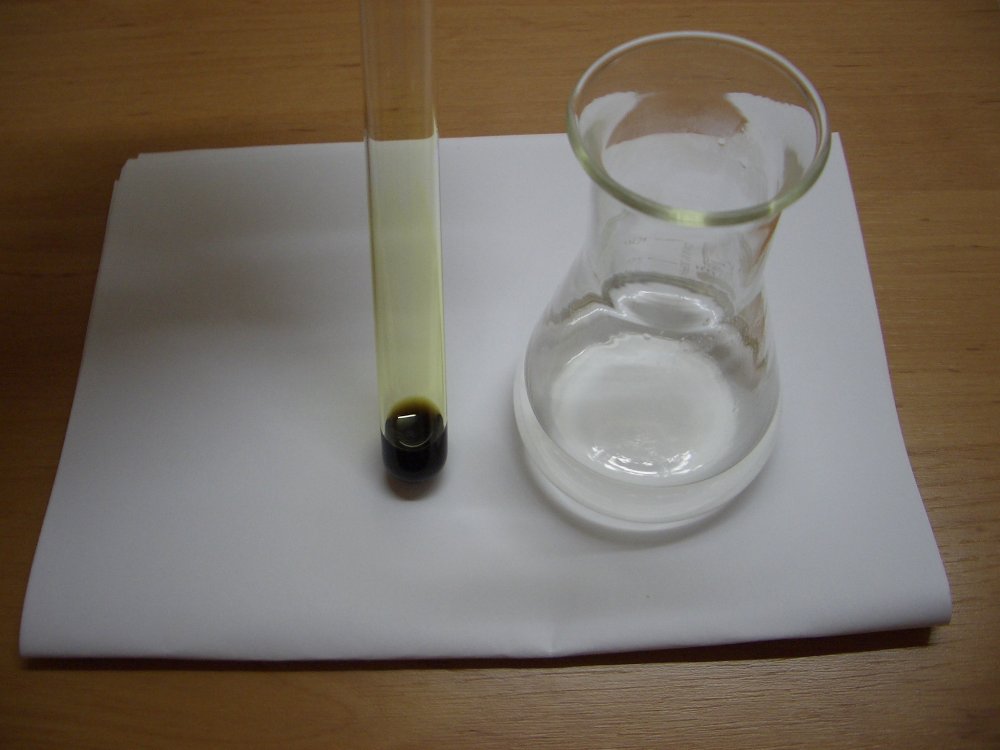
The contents of the test tube is poured in the dilute (but excess) solution of NaOH. The result is a yellow/brown slimy and voluminous precipitate.
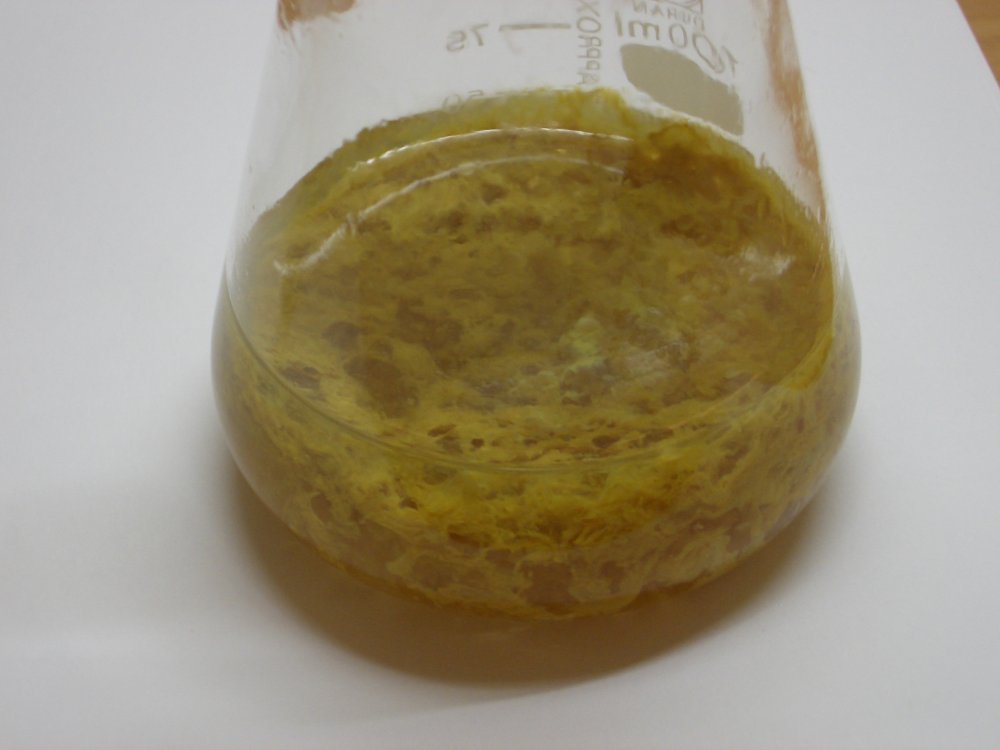
When shaken, it changes to small particles:
Part of the liquid with precipitate is poured in a test tube and allowed to settle at the bottom. The solid becomes more yellow. A brighter color is obtained after a few minutes.
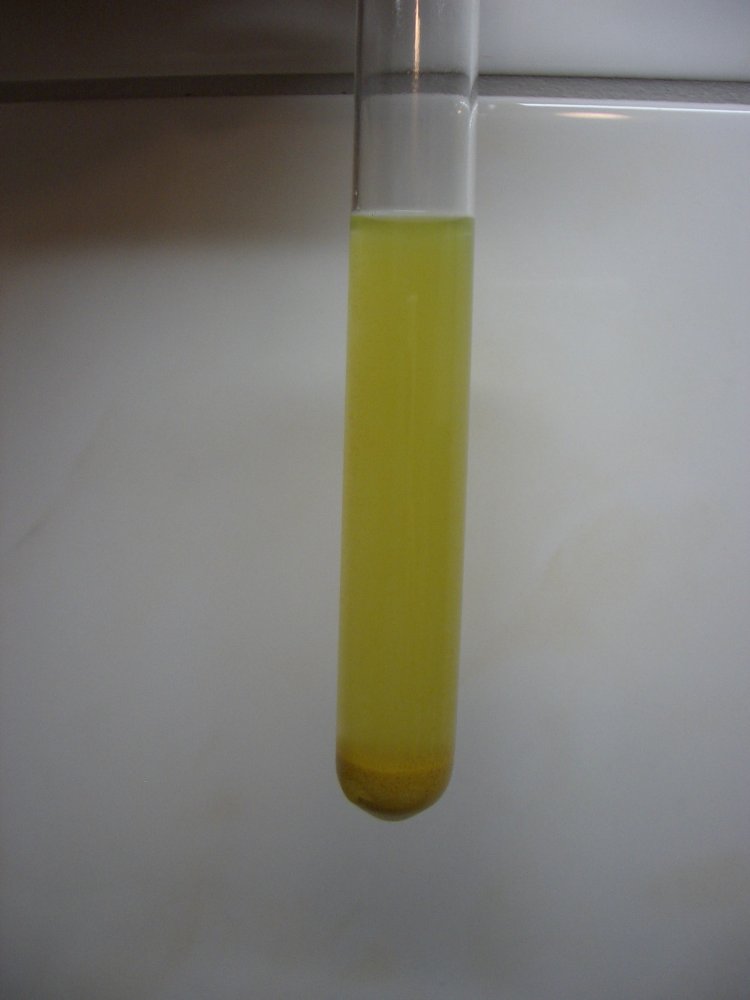
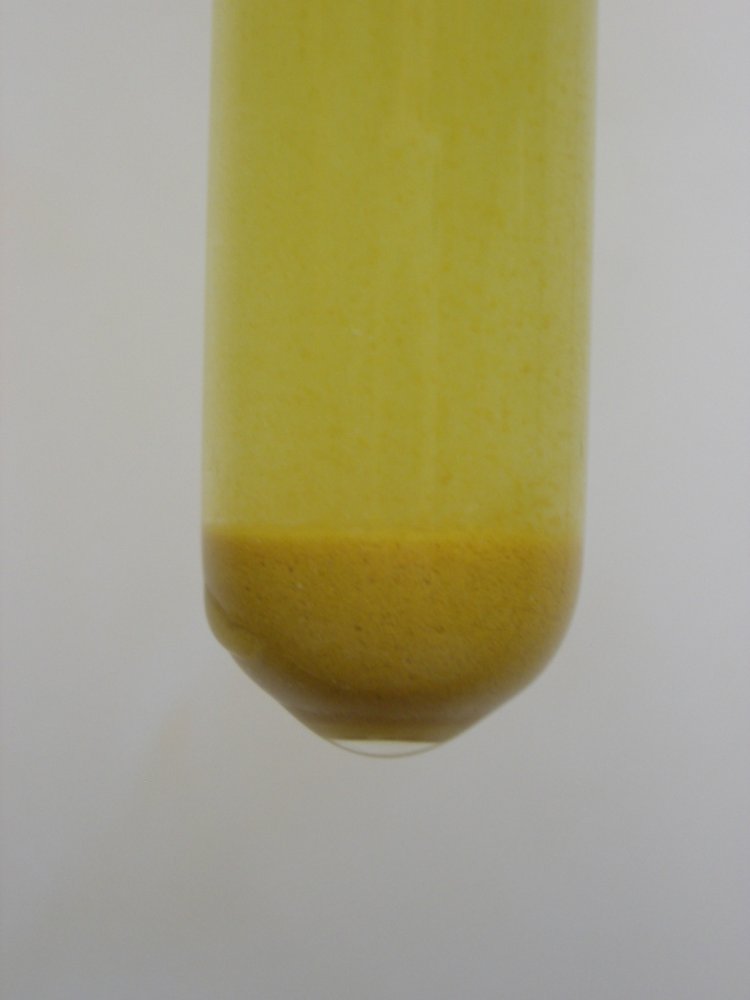
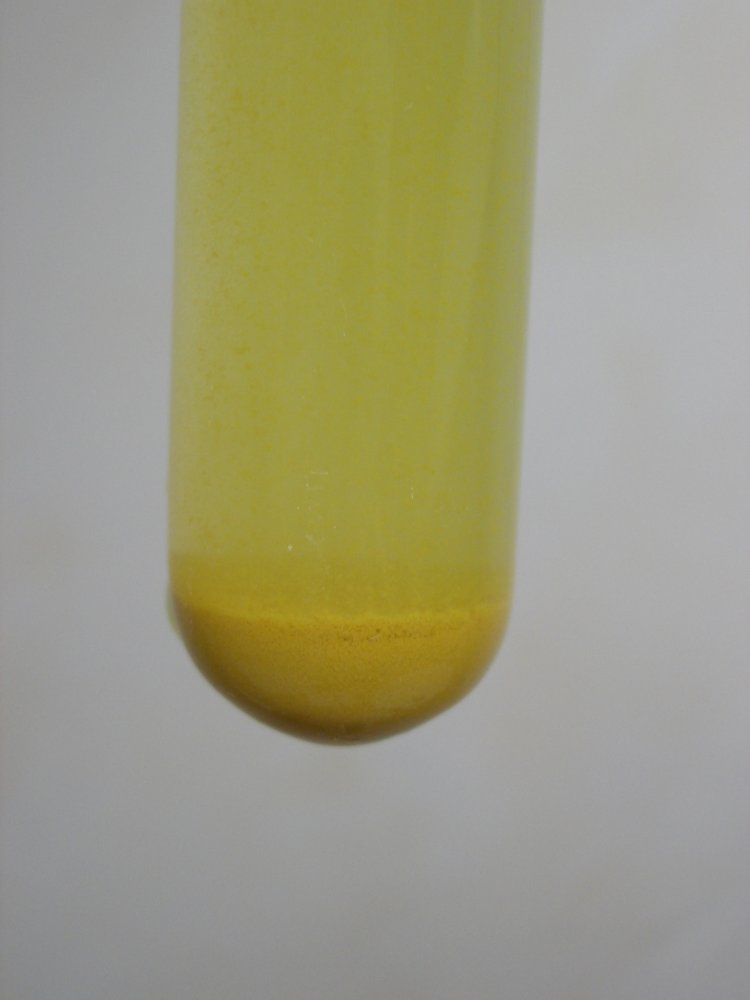
What is the yellow compound? Or is it a mix of compounds?
![]()
Discussion of results
Again, this experiment clearly shows that no plain copper (II) compound is formed on oxidation of the copper (I) complex in hydrochloric acid.
A most remarkable compound is formed, when the dark liquid is mixed with a dilute hydroxide solution. The dark compound contains copper (I) and copper (II). The yellow color cannot simply be explained. The copper (II), present in the liquid, would cause the formation of a blue precipitate. It is known that copper (I) with hydroxide can give a yellow, or even orange/yellow precipitate of CuOH/Cu2O. Combining these two colors, one cannot simply explain the bright yellow color. Initially, the precipitate is dirty brown/yellow and it becomes brighter in a few minutes. Apparently, a slow reaction occurs in the precipitate after the initial quick formation of the precipitate. A lot more can be investigated here.
Remark: Copper sulfate can be used here, instead of copper chloride.
back to main copper riddle page
